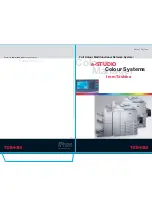
Media Flow Controller Network Connection
53
Media Flow Controller Administrator’s Guide
Media Flow Controller Overview
Media Flow Controller Network Connection
The
network connection
CLI commands let you specify how requests are handled. These
are global values and may be overridden by namespace custom virtual-player settings. You
can specify an assured-flow-rate, how many concurrent sessions to allow (Media Flow
Controller can support up to 40,000 concurrent sessions), the idle timeout for a connection,
and max-bandwidth (the maximum allowable bandwidth) for any one given session. If you do
not use a customized virtual player in your namespace, these values are used.
Media Flow Controller Namespace Functions
The namespace feature allows you to classify different types of traffic based on a combination
of URL and FQDN, and apply separate delivery policies to each type of classified traffic. This
gives you a way to separate your video delivery traffic characteristics based on any given
variable in the stream/request being received by Media Flow Controller from the client. You
can create up to 256 namespaces in one Media Flow Controller
At a minimum, namespace configuration requires a domain (only one per namespace), an
origin-server (one per namespace unless using server-map), and a match criteria (to refine
delivery of incoming requests). Additional parameters for origin-fetch, cache options, and so
forth, are optional. You can further define control by assigning a configured virtual-player
(overrides network connection global defaults). The namespace is referenced via the URL in
the HTTP request directed to Media Flow Controller. For example; if you are serving content
through Media Flow Controller for media under the following directories from your origin
library...
•
example.com/videos/trg
•
example.com/videos/UGC
•
example.com/videos/premiumcontent
... you might create three namespaces: TRG, UGC, and Premium each with a different set of
delivery policies.
Media Flow Controller Virtual Player Functions
Media Flow Controller provides a virtual player function that assists in media viewing
optimization. You can create any number of virtual players; they are utilized when assigned to
a namespace. Namespaces that are not assigned a virtual-player use the values configured
under network connection for the same functions. Virtual players let you implement custom
delivery policies. There are five types of virtual players, described in this section.
Type
generic
has a super-set of delivery options including hash verification of data;
Type break
has
a subset of Type 0 delivery options,
Type qss-streamlet
lets you create an assured flow rate
map to apply different delivery rates per URI;
Type yahoo
provides a subset of delivery
options plus special health and hash verification options;
Type smoothflow
provides
SmoothFlow options and is required for SmoothFlow delivery;
Type youtube
provides a
subset of delivery options and YouTube-specific options.
Summary of Contents for MEDIA FLOW CONTROLLER 2.0.4 -
Page 6: ...Media Flow Controller Administrator s Guide VI Copyright 2010 Juniper Networks Inc...
Page 24: ...LIST OF FIGURES XXIV Copyright 2010 Juniper Networks Inc...
Page 37: ...Copyright 2010 Juniper Networks Inc 37 PART 1 Media Flow Controller Administration...
Page 38: ...Media Flow Controller Administrator s Guide 38 Copyright 2010 Juniper Networks Inc...
Page 285: ...Copyright 2010 Juniper Networks Inc 285 PART 2 Media Flow Controller Command and MIB Reference...
Page 286: ...Media Flow Controller Administrator s Guide 286 Copyright 2010 Juniper Networks Inc...
















































